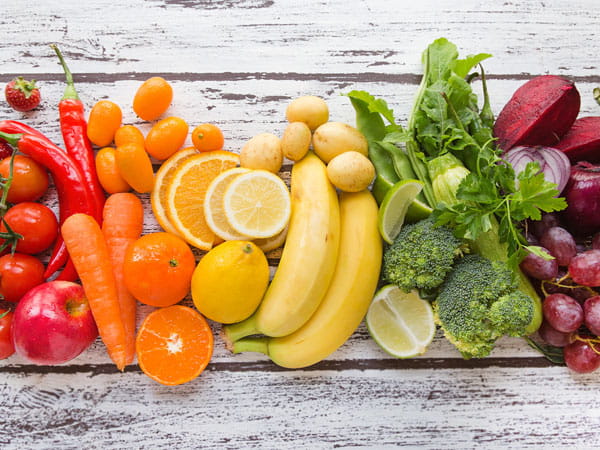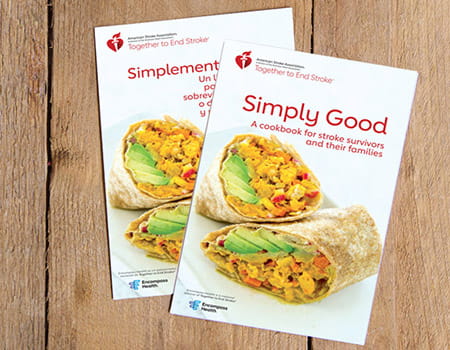Eat Smart

Eating well can help reduce your risk of having a stroke or prevent a second one. As you make daily food choices, base them on these American Heart Association recommendations.
Fruits and Vegetables

Here are some examples of a serving of fruits and vegetables:
- One medium fruit = about the size of your fist
- ½ cup of fresh, frozen or canned fruits and vegetables
- ¼ cup of dried fruit
- ¼ cup of 100% fruit juice
- ½ cup of vegetable juice
Whole Grains

Here are some examples of a serving of whole grains:
- 1 slice whole-grain bread (such as 100% whole-wheat bread)
- 1 cup ready-to-eat, whole-grain cereal
- ½ cup cooked whole-grain cereal (such as oatmeal), brown rice or whole-wheat pasta
- 5 whole-grain crackers
- 3 cups unsalted, air-popped popcorn
- 1 6-inch whole-wheat tortilla
Protein

Here are some examples of a serving of protein:
- Piece of meat or fish about the size of a deck of cards
- Small chicken drumstick or thigh
- 2 thin slices of lean roast beef (each slice 3" x 3" x 1/4")
- ½ cup of legumes (such as lentils, beans and chickpeas)
- A small handful of nuts (such as almonds, walnuts and pistachios)
- Fat-free or low-fat milk or yogurt
- Fat-free or low-fat cheeses (such as Swiss or Cheddar)
How to eat smart using a nutrition label
Eat Smart with Nutrition Labels Infographic
1
Start with serving information.
This will tell you the size of a single serving and how many servings are in the package.
2
Check total calories.
Do the math to know how many calories you’re getting if you eat the whole package.
3
Limit certain nutrients.
Compare labels when possible and choose options with lower amounts of added sugars, sodium, saturated fat and trans fat.
4
Get enough of beneficial nutrients.
Eat foods with nutrients your body needs, such as calcium, dietary fiber, iron, potassium and vitamin D.
5
Look for % Daily Value.
The % Daily Value (DV) tells you the percentage of each nutrient in a single serving in terms of the daily recommended amount.
More things to consider:
- When cooking, use healthy oils, such as olive or canola.
- Minimize intake of processed foods.
- Minimize intake of added sugars.
- Emphasize foods prepared with little or no salt.
- Limit alcohol intake, if any.
